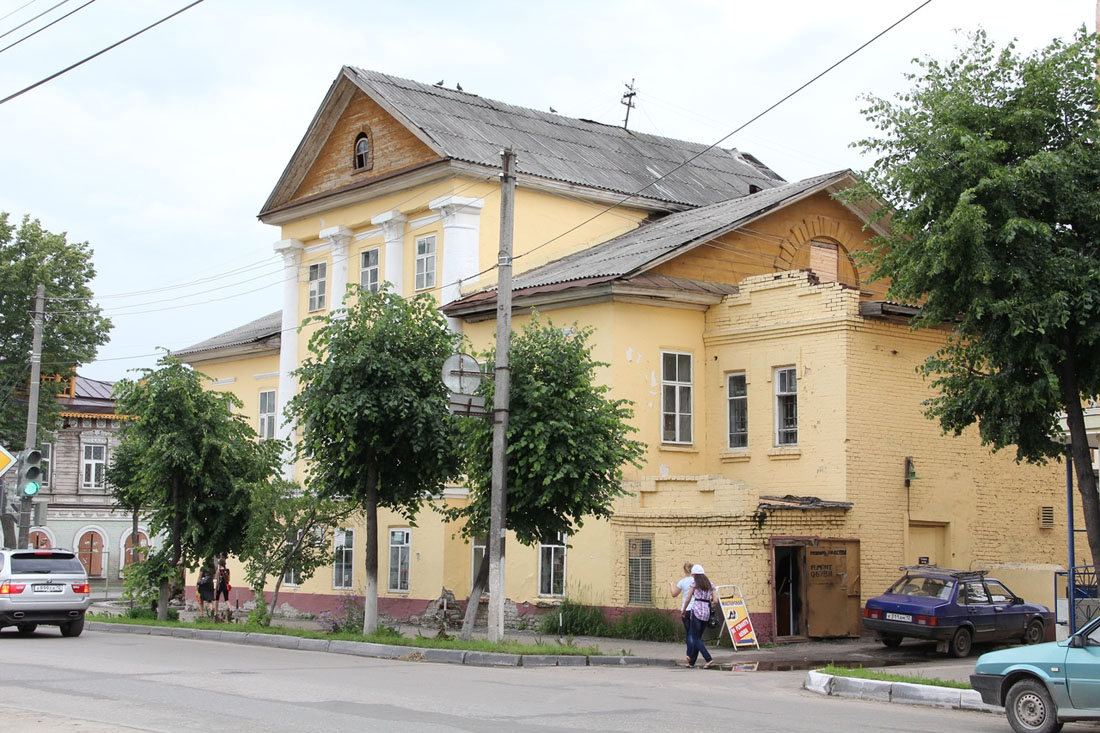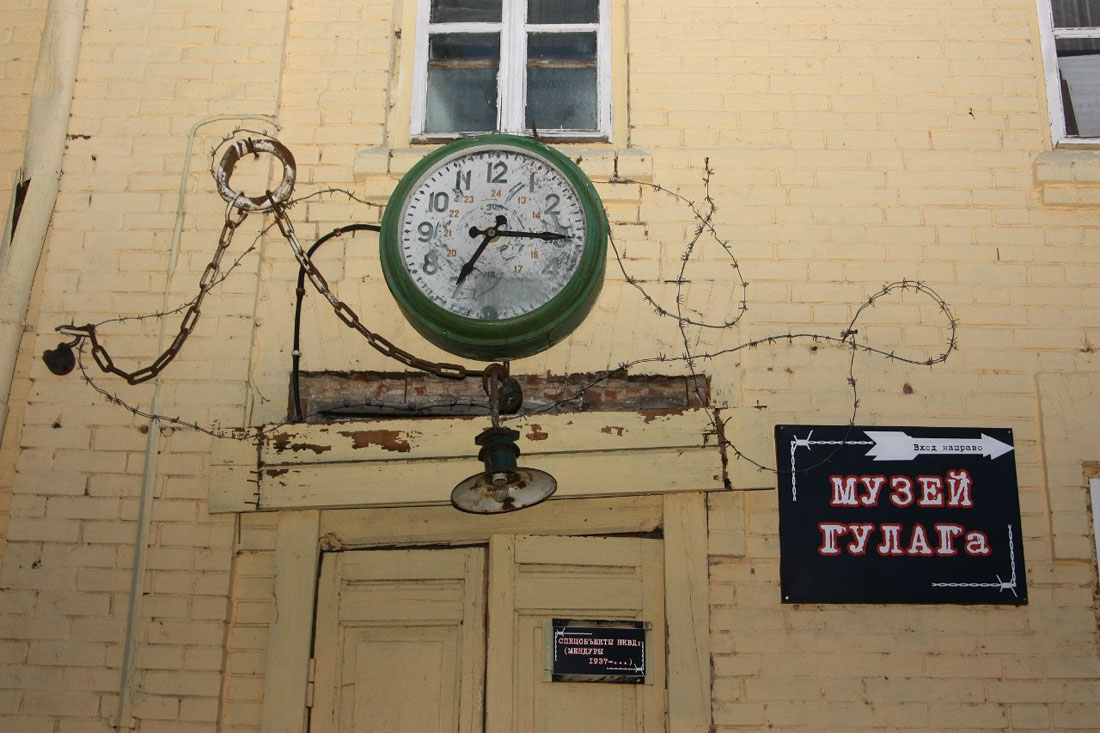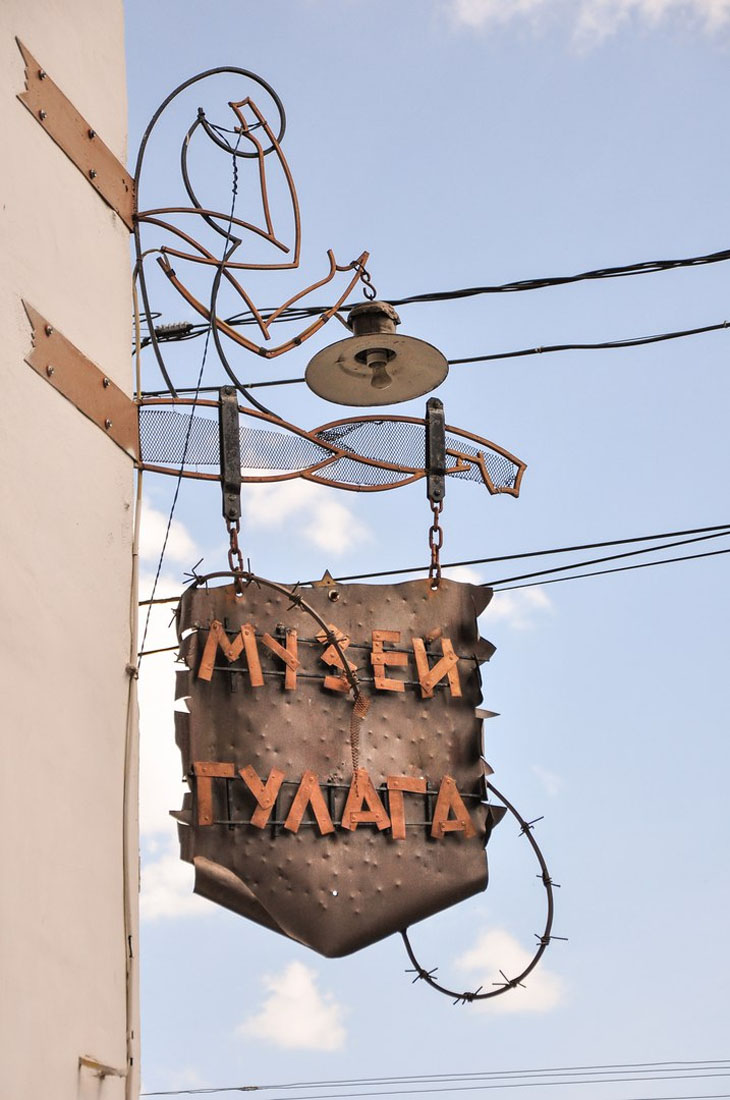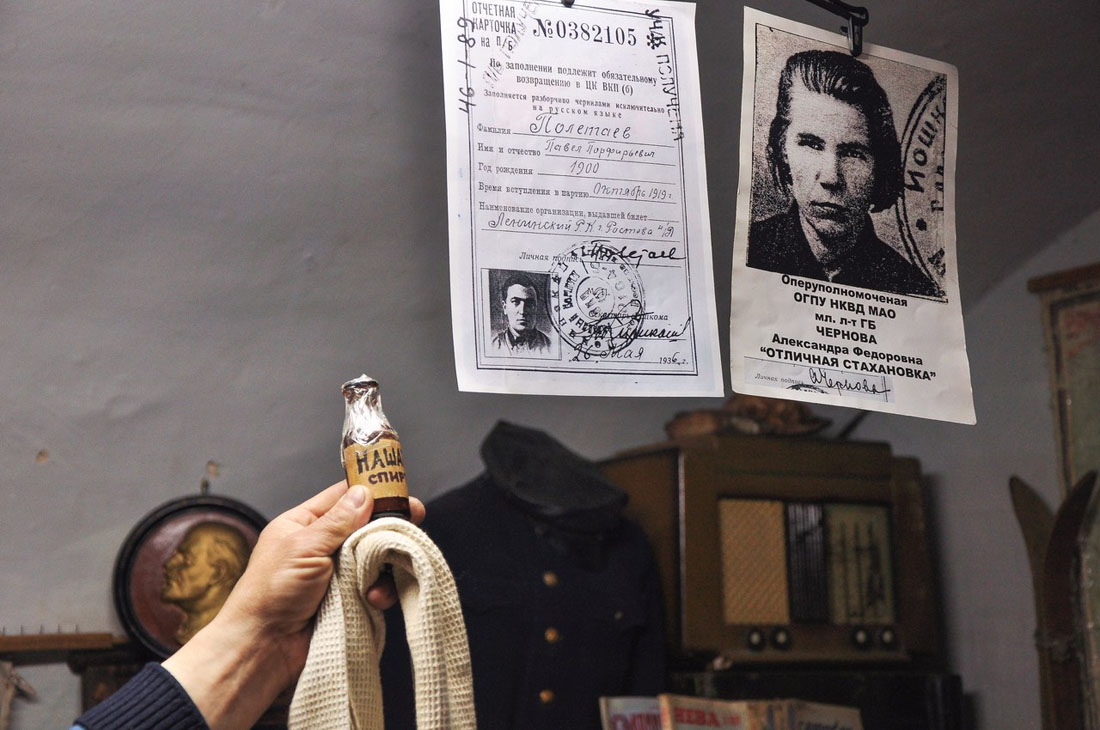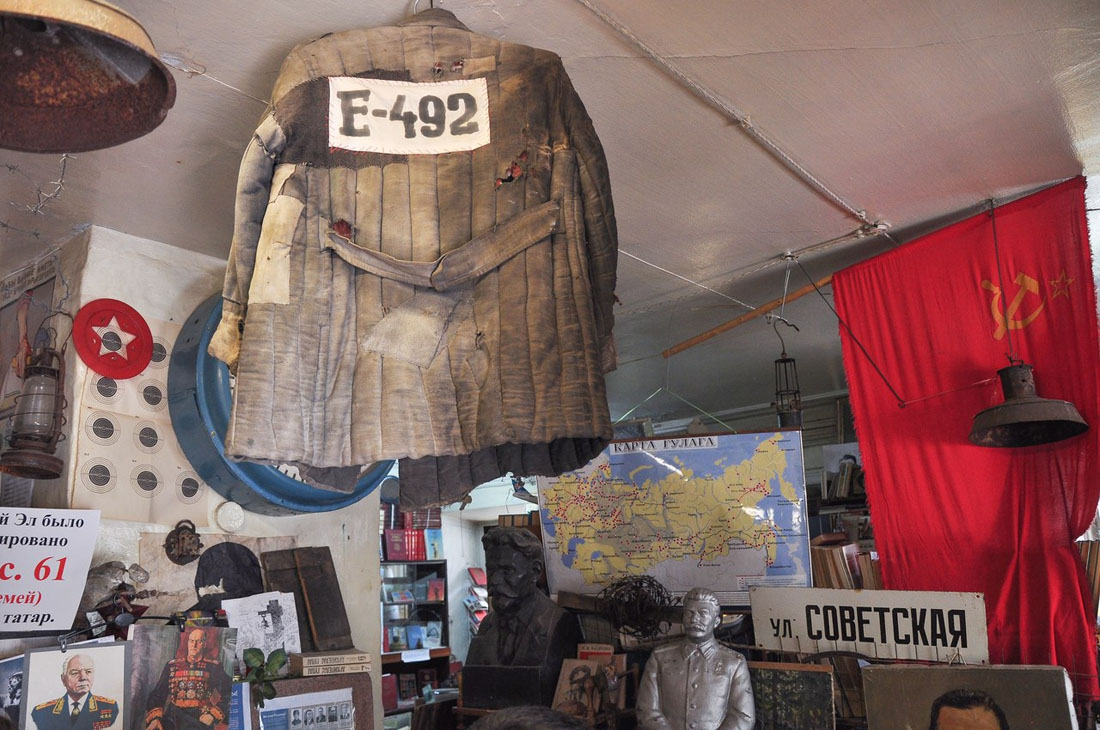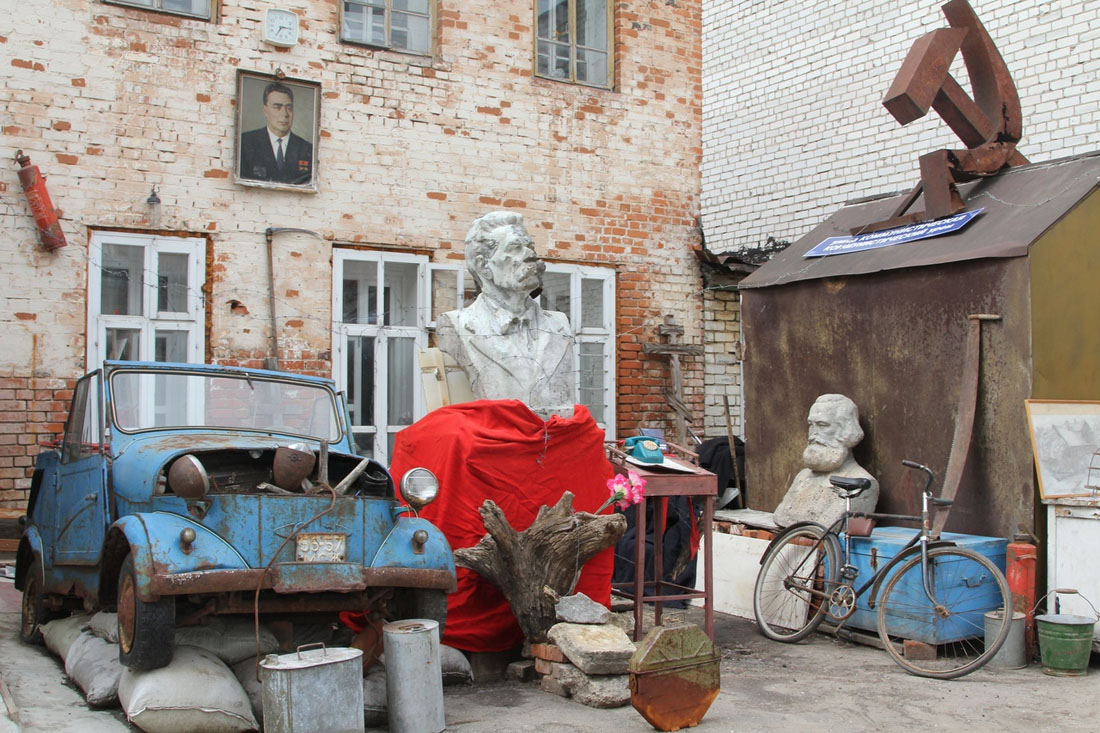The People’s Memorial Mari GULAG History Museum
Mari El Republic
Contact information
Rep. Mari El, Yoshkar-Ola, Kremlyovskaya (Kommunisticheskaya) ul., building 2, Sovetskaya ul., building 102
Tel.: +7 (8362) 66-00-03, +7 (902) 439-00-03
Operating hours
daily, seven days a week, upon request
Ticket price
(entrance ticket, excursion, master class) – only at visiting exhibitions, To the stationary museums:
Rep. Nat. Museums – 60 rubles
City – 40 rubles
Excursion – 100 rubles
All income remains with them
In the building of our Gulag Museum and in expeditions – search, human rights, and literary master classes are conducted by authors and educators for free!
The museum founder
Nikolay Alexandrovich Arakcheev
Founded
2003
The idea of the People’s Education Center for the bitter history of the twentieth century study has been in the air of Mari El since the perestroika times. Gathered together, a tenth of the totalitarian regime victims sincerely dreamed of opening the cultural and historical site in the capital. They and their children miraculously survived incredible physical, and most importantly, moral suffering, and financial ruin: confiscation of personal property, unjustified deprivation of most of their civil rights, an exile to a foreign land, etc. This is a place where you can come to collect memories, material evidence of terror, and personal belongings of the GULAG prisoners that are put on display for an inquisitive public, especially as a warning to the youth, so as to prevent future repetitions of past mistakes: despotism and political repression in the Russian society. It’s possible to openly talk about the secret persecution, and the missing and broken fates of millions of compatriots who were innocently affected by the arbitrariness and cruelty of the individual Soviet punitive agencies.
The best architects, well-known artists of the RME laid the idea of difficult memory in the construction project of the capital’s grandiose Memorial of Memory and Sorrow at the City Prison. General inflation and a budget deficit contributed to the birth of an extraordinary innovative project: the temporary opening of the PRIVATE People’s Memorial GULA History Museum, a traveling exhibition of which, since 2003, has successfully traveled through cities and towns of the Volga region. Fortunately, since 2009, the premises of the former OGPU NKVD MASSR Execution House, due to the Ministry of Internal Affairs Printing House bankruptcy, have been empty and have collapsed due to abandonment, with the looming threat of demolition of the unique artifact. With the support of the State Commission for the Rehabilitation of the dictatorial regime victims under the President of the RME (Chairman and Minister Myakishev G.F.), the deputies of the City Council and the Mayor of Yoshkar-Ola supported the project of the Museum that I presented and from April 2010 and allocated a 2-story hospital, a 300 square meter building for the opening of the Gulag Museum. The touristic cluster of the region expanded. Shortly after the avalanche of awards, the exhibition area of the Museum was doubled to 600 square meters, giving us the 3rd floor with the attics (former NKVD warehouses) and an extension building (registry office archive, with rare stone casemates of the NKVD MASSR former commandant’s office) for the International Exhibition from Norway.
So the years flew by and the time came for the overhaul of a unique monument of history and architecture, the Tsarevokokshaisk Skyscraper (only churls are higher), a building with a complicated history of a century and a half, where 80 years before the revolution, heat and light radiated from the cozy hotel of the Bulygin and son tenement house (the 1st in the county, the owner is an honorary citizen of 2 cities), the provincial life flowed, music was audible, travelers relaxed, sang songs, and some even gave birth. The comfortable restaurant on the 1st floor smelled of candy, pancakes, fried bread, mead, kvass, and cucumbers. From 1918 onward, a completely new life invaded it for 40 years, about which the Museum narrates.
Every year, the Museum announces the opening of at least two new “bitter” exhibitions about the fates, occurrences, iconic events in MASSR in its halls of Gulag Topography, the Investigator’s office, Science and Creativity, Kulak, Clergy, War, Stories of persons, and others. For example, about the fates of the science legends Vavilov and Korolyov, fighting military experts Nedorubov, Rokossovsky, and Voroshilov, photographers Prokudin-Gorsky, Temin, Lowenstein (Johnston), etc. Exhibitions of memories of our residents share details about meetings with Soviet legends. We create our photo essays and video presentations. Every year we speak on radio and TV, and write in newspapers. Over the entire period of operation, the Museum was visited by over 40 thousand visitors from 28 countries of the world. We have received over 300 awards and 16 volumes of reviews.
